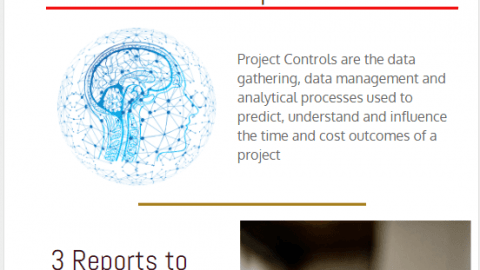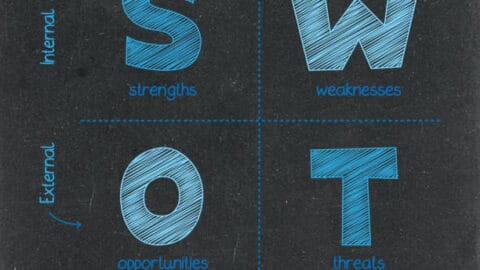The Difference Between Agile And Traditional Project Management Methodologies
Rapidly evolving industries compel companies to take advantage of project management systems to operate as efficiently as possible. Agile and traditional project management methodologies enable businesses to produce the best possible products and services. They ensure the success of various processes and help companies achieve their objectives. Although there are numerous project management approaches, most businesses rely on either traditional or agile project management. In the last few years, agile project management has surged in popularity among project managers who prefer its high degree of adaptability and better risk management. Nevertheless, the traditional project management methodology offers project managers a few valuable advantages.
Table of Contents
To understand the difference between the two approaches, this article explores the two project management methodologies and their benefits.
What Is Traditional Project Management?
Traditional project management, or the ‘waterfall approach’ approaches projects in a sequential way. As a result, project managers who prefer the traditional project management methodology clearly define the scope, schedule, and budget of the project from the very beginning.
Since it approaches projects in a linear cycle, each phase consisting of initiation, planning, execution, monitoring and control, and closing is highly predictable. Projects using this approach follow a rigid and fixed lifecycle of stages. In order to successfully accomplish a project with the traditional project management methodology, project managers must plan the project in its entirety from the start. This well-structured approach ensures a consistent flow pattern to the project, but it requires flawless planning from project managers.
Under traditional project management, projects operate under the constraints of limited scope, fixed budget, and a strict timeline. Project managers must play a lead role in the project to verify it flows within the constraints and confirm each phase is completed accordingly. Since each stage must be completed before the project moves forward to the next one, it is the project manager’s responsibility to guarantee each phase is completed on time and within budget.
What Is Agile Project Management?
Agile project management is an approach to project management that gained massive popularity among project managers in the past years. Its modern, non-linear approach appeals to many teams because it fosters collaboration and teamwork.
This approach operates in relatively short sprints. These sprints tend to be a few weeks to a month in length. After each sprint, the agile project management methodology seeks feedback from consumers to ensure each iteration of the product is better than the previous one.
As a result, this iterative approach allows for significantly more changes and a greater degree of flexibility. Projects that use the agile project management approach are continuously adapting to feedback. This allows teams to incorporate any necessary changes and developments to produce the best possible results.
Under agile project management, the project is always evolving to guarantee customer satisfaction. Some of the common Agile frameworks used by teams to streamline software are Scrum and Kanban.
Due to the high involvement of customers in the development process, this approach guarantees they are satisfied with the results. For this reason, along with others, many project managers prefer to use the agile project management approach over the traditional project management approach.
Benefits of Traditional Project Management
There are numerous advantages offered by the traditional project management approach to businesses, project managers, and their teams. Here are a few of the best benefits of traditional project management.
Well-Structured And Well-Defined
Since the objectives of each stage in the project are predetermined before the execution phase, teams understand their roles and responsibilities. Moreover, the highly predictable nature of the process means members of the team know what to expect as well as what is expected of them. Projects following the traditional project management methodology can technically operate smoothly with little to no supervision from the project manager. However, it is recommended for the project manager to be constantly present to check the completion of each stage.
Cost Effective
Projects using the traditional project management approach operate within budget constraints. This allows for predictable costs and reduces the chances of unexpected costs.
Controllable
Traditional project management enables project managers to enjoy more control over the project’s various aspects especially its scope, schedule, and budget. Moreover, they can define the expectations within each stage necessary for the project to flow into the next stage.
Accountability
With greater control comes more responsibility for the outcome of the project. Since the processes are clearly defined and well structured, it allows for more accountability at each phase. Ultimately, the project manager leading the project is accountable for its outcome.
Benefits of Agile Project Management
Due to the advantages of the agile project management methodology, most project managers choose this approach for their projects.
Flexibility
Agile project management is often praised for allowing a significant degree of flexibility. It is tremendously more adaptive to changes than the traditional project management methodology. Project managers and members of their team using this framework are able to quickly respond to feedback from clients and incorporate numerous changes into the development of the product throughout the project.
Customer Feedback
Clients heavily participate in the development process and provide continuous feedback. Under this approach, customers are able to see the value and impact of their feedback on the development process. This promotes transparency and assures their satisfaction with the end results.
Collaboration
This approach to project management prioritizes collaboration in all forms. Team members are also encouraged to collaborate with each other on projects using agile project management. Every member must communicate with the rest of the team in order to complete the sprint.
Complexity
The agile project management approach allows project managers and their teams to manage complex projects more easily. Due to its flexible and feedback-dependent nature, agile project management is the first choice of many project managers for large and complex projects.
How To Choose Between Agile and Traditional Project Management
Generally, most complex and large projects should use agile traditional project management. Any projects that require flexibility and feedback are best suited for the agile project management methodology. Moreover, project managers who want to minimize risk will benefit from this approach due to its ability to respond quickly to risks. Project managers who value collaboration and teamwork should also consider this approach.
In contrast, project managers might be better served by the traditional project management methodology if a project is on a short deadline. The controllable nature of traditional project management and its ability to operate with constraints is also extremely suited for remote projects. Less complex and smaller projects will benefit from the structure provided by traditional project management.
Conclusion
Both agile and traditional project management approaches offer their own advantages to project managers. The best fit for your project is the one that best fits your style and objectives as a project manager.
Michael Dehoyos is a project manager and technology content specialist at Research paper writing services. He assists several companies with finding innovative solutions to their problems, and contributes his writing on business growth and productivity strategies to numerous sites and publications.










